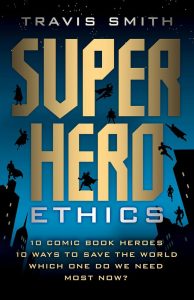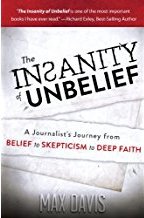Mike Maden. Tom Clancy: Line of Sight. New York: Putnam, 2018. Print.
The latest installment of the Tom Clancy Estate novels is an entertaining story. It contains some of the usual things that made Clancy’s novels so popular. There is an apparent terrorist plot that could cause multiple nations coming to war. There is some of the latest technology that could be used for nefarious purposes. There is a cast of curious characters.
Most of Line of Sight is set in Sarajevo, the infamous capital of the nation of Bosnia and Herzegovina. Like some of Clancy’s other novels, we get a lot of historical background. Sarajevo is where the Austrian Archduke was assassinated to begin World War I. It was the site of the 1984 Summer Olympics, still probably the best television presentation of any Olympic event.
In the 1990s it was besieged for four years during the civil war that started after the breakup of the Soviet empire and Yugoslavia. Much of the history is narrated through the eyes of a Bosnian tour guide who had a twenty-five-year-old connection with the Ryan family. And it looks like there will be an ongoing connection as Jack Ryan, Jr., has fallen for her.
While the story focuses almost exclusively on Jack, Jr., a U.S. government secret agent and son of the the President, the Hendley Associates tech guru Gavin does some technical wizardry which helps out (bails out?) Jack.
And it looks like a group of terrorists—possibly Bosnian Serbs allied with Russia, or maybe Bosnian Muslims (“Bosniaks”) allied with Turkey or Al Qaeda or ISIS or all three—have stolen some new thermal weapons from the Russians. Only maybe, they were allowed to be stolen. These weapons are non-nuclear, so they are legal according to current international treaties and conventions, but their thermal abilities make them every bit as deadly as an atomic bomb.
Besides Aida, the Bosniak tour guide whose eye was saved in the nineties by Jack’s mom, eye surgeon Dr. Catherine Ryan, there is Topal, the Turkish ambassador who seems to be everywhere; Kolak, a Croat Bosnian police detective who seems to know more about Aida and the Ryans than he is letting on (after all, Jack, Sr., is President of the United States); and Emir, a Muslim nationalist (terrorist?) who has had a lifelong crush on Aida; among others. One suspects Emir may be more in favor of Sharia Law simply because under that, the women have little or no say in whom they marry, so the umma might decide that Aida should marry him.
Unlike any other Clancy book I have read, Line of Sight reads more like a James Bond story. Bond also used gadgets and technology. Bond also usually worked by himself. This story is much less about the team—Hendley Associates, the Campus, or even the U.S. Government—instead, it is almost strictly about Jack Ryan, Jr. Indeed, Jack is in Bosnia on a brief vacation. Also, more like Bond and less like traditional Clancy, there is more sex. It is not especially explicit or pornographic, but Ryan, Jr., indulges a number of times, more like James Bond than John Clark or Jack Ryan, Sr.
There are some clever plot twists. Not only is there a serious terrorist threat, but a very secretive crime syndicate has apparently put out a contract on Ryan, Jr. It seems they want his head, literally. It is unclear whether the syndicate has a connection with any terrorist organization, but the actors in that group also hail from Eastern Europe.
I recall watching a film, that was a spoof on action films, I forget the title or much about it. One of the characters said he was not going to join a certain virtuous hero because in movies sidekicks like him always get killed. He said you could pick out the guy who would get killed in the first five minutes he appeared on the screen. I felt that way about a certain character. I was not wrong about who got killed, but the outcome—how and why—was still a big surprise.
As always, there are some trenchant political observations.
In the President’s mind, D.C. was one giant Hungarian cluster dance, with occasional interruptions of clarity and purpose, but only when the national interest was properly communicated to and understood by the preening peacocks on the Hill. (16)
“A democracy cannot survive identity politics. Bosnians must think of themselves as Bosnian, first and always. All religions are respected in your country [i.e., Bosnia], and everyone has equal rights, and there has been peace. But all of that is at risk if ethnic identity trumps democratic ideals.” (25)
“Europe’s always been that way. They never carry their full load, and they seldom follow through.” (125)
Line of Sight is quite contemporary as no one, even in the Balkans, really knows what Turkey is up to. Is the current president a nationalist, an imperialist, or is he trying to be the leader of a new caliphate?
The last four chapters (only 11 pages in all) are a kind of epilogue. Some of Clancy’s novels end with ironic comeuppances, none perhaps better than in Rainbow Six. Each of the brief last chapters in Line of Sight does the same. Some are even funny.
If the reader does not mind the parallels with Bond, Line of Sight is worth reading to the very end.

